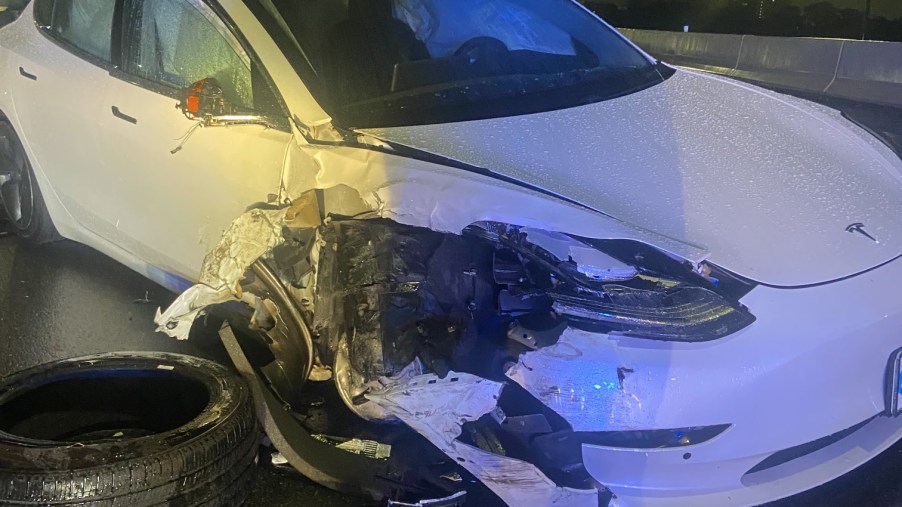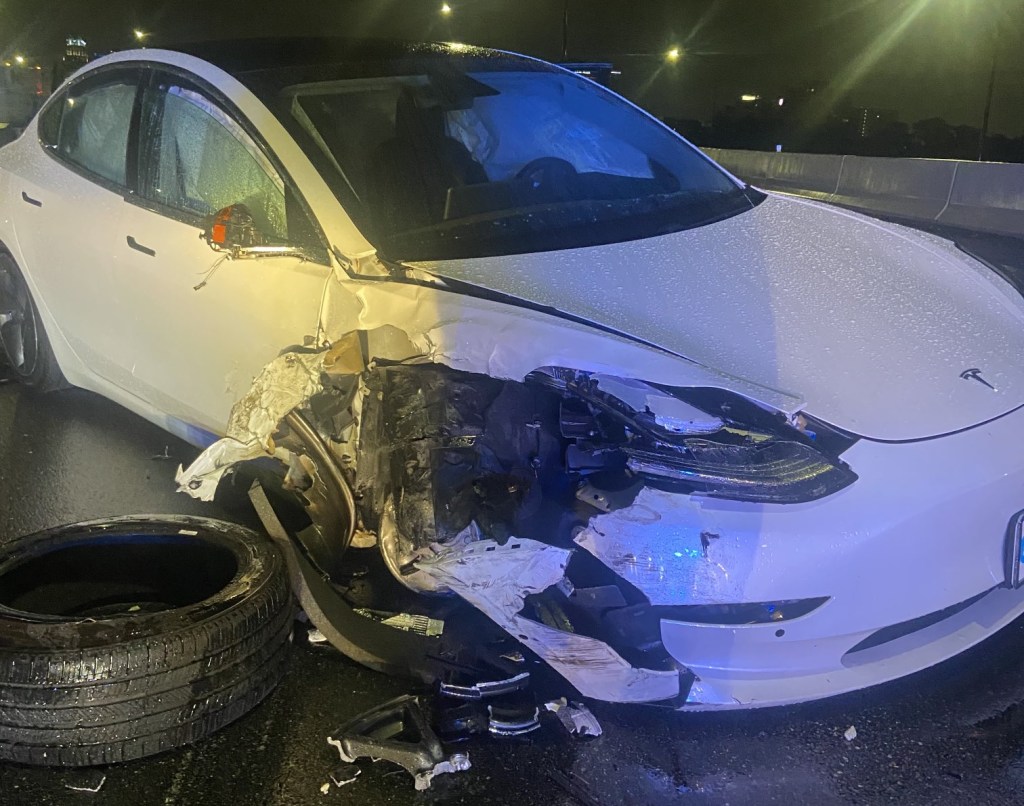
A Model 3 Using Tesla Autopilot Sideswiped an FHP Trooper on I-4
While Tesla is working on improving Tesla Autopilot conditions, the hits keep on coming. Over the weekend, a driver using Tesla Autopilot on a 2019 Model 3 struck a Florida Highway Patrol vehicle stopped on the side of I4. This is the 12th incident involving Tesla Autopilot and a first responder vehicle since 2018.
The Model 3 was using Tesla Autopilot at the time

The Florida Highway Patrol vehicle was unoccupied at the time of impact as the Trooper was helping a disabled motorist on the side of the road. While it isn’t clear precisely what happened, the Tesla Model 3 had Tesla Autopilot engaged and struck the patrol vehicle. Tesla is currently under investigation from the National Highway Traffic Safety Administration (NHTSA) for issues with Autopilot already.
The advanced driver assist system (ADAS) that Tesla uses is generally safe to use, but these incidents continue to pop up. While the NHTSA investigates Autopilot’s safety, should drivers continue to rely on the system to keep people safe? According to the official document from the NHTSA, 11 similar incidents have occurred.
The NHTSA and The United States Department of Transportation (USDOT) described the official problem as, “Subject vehicle crashes with in-road or roadside first responders.” The NHTSA noted one fatality. The NHTSA has not yet added the crash from August 28, 2021, at publication. The agency did confirm there were no injuries or fatalities from this event.
The NHTSA has questions about Tesla Autopilot
The NHTSA and USDOT noted that the official start of this investigation was January 2018. The products involved are the 2014-2021 Tesla Model Y, Model X, Model S, and Model 3 vehicles. Furthermore, these are crashes that involved crashes with in-road or roadside first responders.
“Most incidents took place after dark and the crash scenes encountered included scene control measures such as first responder vehicle lights, flares, an illuminated arrow board, and road cones. The involved subject vehicles were all confirmed to have been engaged in either Autopilot or Traffic Aware Cruise Control during the approach to the crashes.”
FHP
In the most recent incident, the road is wet, and it is dark out. These are bad conditions to be driving in any way, but is there a correlation here with Tesla Autopilot, darkness, and a roadside disturbance? That’s what the NHTSA wants to know as well.
The investigations are active
Tesla, FHP, and the NHTSA all have open investigations into Autopilot issues. FHP noted that the driver turned on Autopilot before the crash, but it wasn’t clear how long before. The automaker is adamant that Autopilot is safe. Earlier this year, Tesla released the Tesla 2020 Impact Report. Tesla noted that drivers with Autopilot engaged were nine times safer than those not using it.
In 2020, vehicles with Tesla Autopilot engaged in the U.S. reported 0.2 accidents per million miles. The U.S. average was nine times higher at 2.0 accidents per million miles driven. The average was four and a half times lower in situations where Autopilot wasn’t engaged, but active safety features were.
Autopilot is only to be engaged while the driver is paying attention and has hands on the wheel, but that doesn’t seem enough to prevent 100% of accidents. Tesla continues to work on fully autonomous driving using Full Self-Driving, but these investigations will continue as long as problems with Tesla Autopilot continue. FHP is actively investigating this particular accident, which might give more insight once completed.



